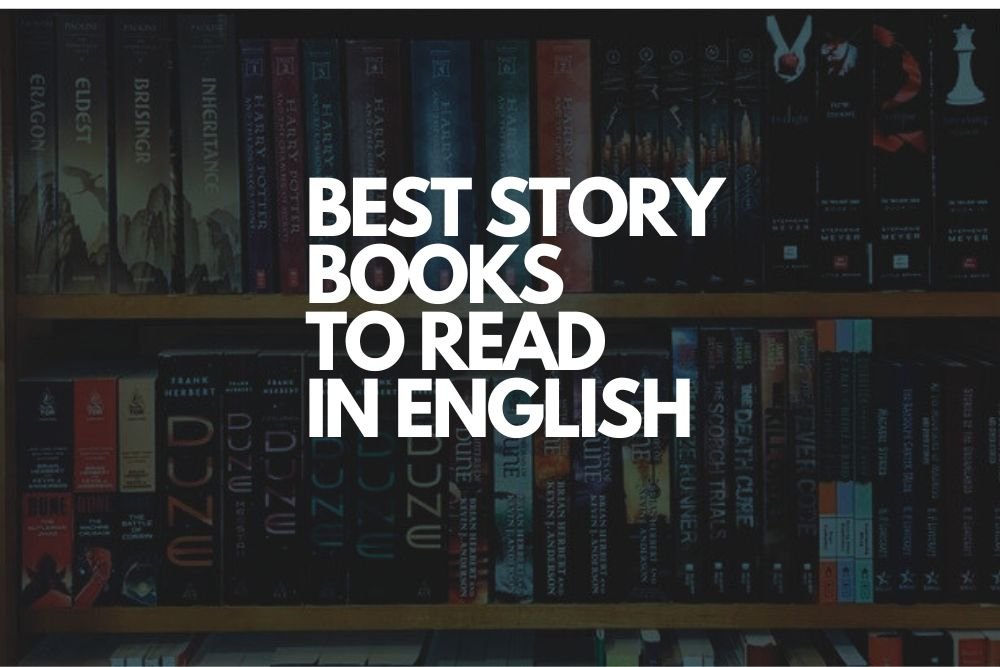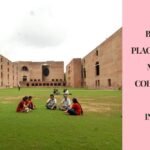Welcome! I guess you are searching for the best story books to read in English. Aren’t you? If yes, well, you have arrived at the right page! I have some of the best storybooks with interesting storylines that can greatly impact your life.
Moreover, these can change your perception of your life and inculcate the habits that can make you a better person. So, if you are ready to get inspired with these storybooks, keep reading the article till the end!
Here Are The Top 10 Best Story Books To Read In English
1. Things Fall Apart
Have you ever wondered how cruel we humans were to the concept of racism?! This is one of the best story books to read in English that will have a great impact and make you realize the effects of discrimination.
The book tells the life story of Okonkwo, the Igbo warrior, who raises his voice against the colonial government. He belongs to a tribal community namely Igbo and the white people try to suppress the community. The events that happened next will make your reading more interesting.
- Author: Chinua Achebe
- Story: Depicts pre-colonial life in Igboland (modern-day southeastern Nigeria) and the subsequent impact of European missionaries and colonial forces.
- Genre: Modern African novel in English
- Moral: Explores cultural clashes, identity, and the effects of colonization.
- Why Read It?: A seminal work in African literature, it provides insights into African history and culture.

2. The God of Small Things
This is a book that talks about the untouchability and its harmful effects on the society. The story is set in Kerala and revolves around the character Ammu and her English cousin.
The narration swings to 1963 and 69 and gives a parallel story perception. Also, the story reveals family dynamics, secrets, and tragedies. It explores themes of caste, love, violence, and loss.
- Author: Arundhati Roy
- Story: Explores the childhood experiences of fraternal twins in 1960s Kerala, India, against the backdrop of casteism and British colonialism.
- Genre: Literary fiction, post-colonial novel
- Moral: Challenges societal norms and explores love, loss, and social injustice.
- Why Read It?: A beautifully written novel with rich characters and a unique narrative structure.

3. Beloved
Beloved is the right choice if you like to read books with historical stories. The story is a bit scary and haunting with the character named Beloved who is the dead daughter of Sethe.
The house, numbered 124 is haunted and Sethe has lived there with her daughter Denver for 18 years. Sethe’s mother-in-law, Baby Suggs, died eight years ago, and her two sons, Howard and Buglar, ran away from the haunted home. She has a woman guest who is Beloved and Sethe tells her life story to her with pain.
- Author: Toni Morrison
- Story: Set in post-Civil War Ohio, it follows the life of an escaped enslaved woman named Sethe and her haunted past.
- Genre: Historical fiction, Southern Gothic
- Moral: Confronts the legacy of slavery and the search for identity and freedom.
- Why Read It?: A powerful exploration of trauma, resilience, and the human spirit.
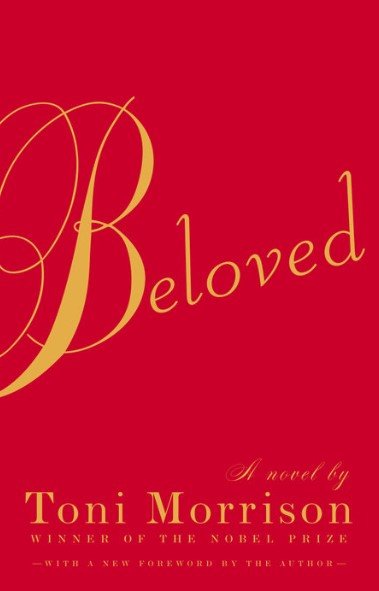
4. The Handmaid’s Tale
The dystopian elements in a book make the readers gain more interest and eagerness to know the climax. The Handmaid’s Tale is one such book that takes us into a dystopian future of the United States where things are not right.
There is a new theocratic regime called Gilead in the US, where the birth rates decreased and women were given the responsibility of bearing children for elite parents. The story follows her struggles for survival, secrets, and resistance in this oppressive society.
- Author: Margaret Atwood
- Story: Set in a dystopian future, it follows Offred, a Handmaid in a theocratic regime where women are assigned to bear children for elite couples.
- Genre: Science fiction, feminist political novel
- Moral: Critiques gender roles, power, and oppression.
- Why Read It?: A thought-provoking and relevant exploration of reproductive rights and authoritarianism.
5. A Fine Balance
How would a person feel if he has so many issues in his life like discrimination, political unrest, economic issues, etc? Sounds terrible. Right? But, here is the book that has an inspirational story to overcome all the hardships and succeed in life.
A Fine Balance is a book that tells the story of four people who come from different backgrounds and face the same obstacles in life. I’m sure this will be one of the best story books to read in English that can change your life!
- Author: Rohinton Mistry
- Story: Chronicles the lives of four strangers in India during the political upheaval of the 1970s.
- Genre: Historical fiction
- Moral: Highlights resilience, compassion, and the human spirit.
- Why Read It?: A beautifully crafted novel that captures the complexities of human relationships.
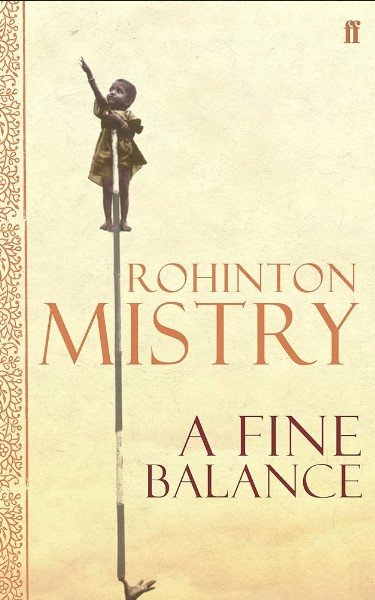
6. Infinite Jest
If you feel that you are lonely and desperate in your life, well, here is one of the best story books to read in English, Infinite Jest. The reason I suggest this book is, it has several life lessons that can change your life!
The book explores themes like addiction, entertainment, and the search for meaning. Hal Incandenza is a tennis player with communication challenges, Don Gately, a recovering addict, Kate Gompert, who battles depression, Wallace’s weird thinking, etc are the characters in the book that make you realize the importance of overcoming loneliness and depression in life.
- Author: David Foster Wallace
- Story: Explores the life of Valentine Michael Smith, a human raised on Mars, and his impact on Earth’s culture.
- Genre: Science fiction
- Moral: Questions entertainment, identity, and connection.
- Why Read It?: A challenging and thought-provoking work that pushes the boundaries of fiction.
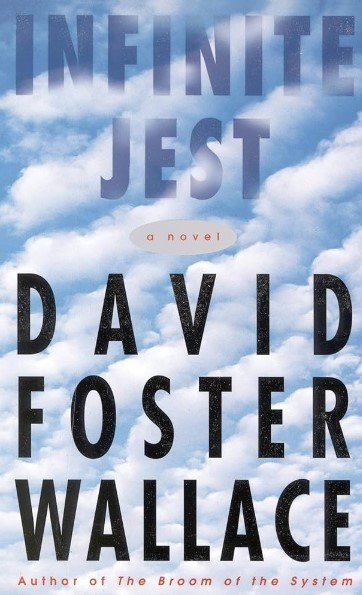
7. To Kill a Mockingbird
It is a great sin to judge or frame a person with looks and his race. This is the story of Tom Robinson, who was falsely accused of a crime just because he belonged to the black race. The white people around him and the judge even have chosen to prejudice Tom.
Atticus is a famous lawyer who tries to prove his innocence of Tom and defends him in court. But at last, it is the thoughts that people have created in their minds won. Tom was punished despite his innocence. This is one of the best story books to read in English that voices against racism.
- Author: Harper Lee
- Story: Follows the life of Scout Finch and her father, Atticus, as he defends an innocent Black man accused of rape.
- Genre: Southern Gothic, Bildungsroman
- Moral: Advocates for justice, empathy, and standing up against prejudice.
- Why Read It?: A timeless classic that tackles racism and morality.
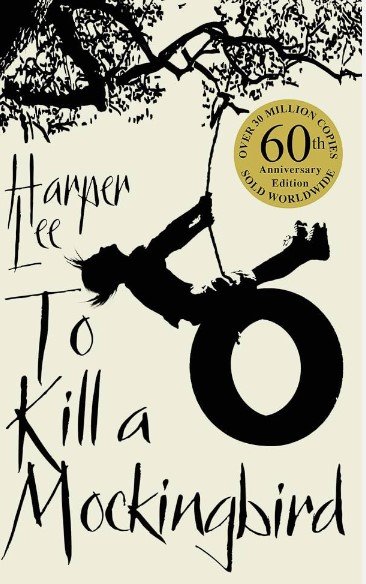
8. Lanark: A Life in Four Books
This is a compilation of 4 books that talk about life and the lessons to be learned in life. The novel has a strange order of books in 3,1,2, and 4. Book 3 tells the story of Lanark, who has a weird disease of his skin turning into scales due to emotional repression.
Books 1 and 2 follow Duncan Thaw’s life in pre-war Glasgow, from childhood to his descent into madness and eventual suicide. The last book tells the journey of Lanark back to Unthank. I can assure you that this is one of the best story books to read in English as it has a different storyline!
- Author: Alasdair Gray
- Story: Combines realist and dystopian surrealist depictions of Glasgow, Scotland. Follows the life of a young man named Lanark who awakens in a strange city, suffers from emotional repression, and embarks on a bizarre journey.
- Genre: Modern Scottish novel
- Moral: Explores cultural clashes, identity, and the effects of colonization.
- Why Read It?: A seminal work in Scottish literature that provides insights into history and culture.
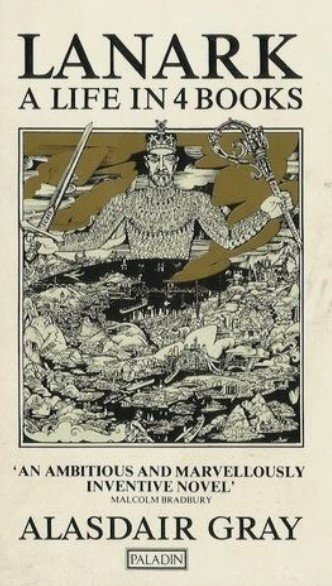
9. Stranger in a Strange Land
Do you love to read science fiction? Then this is one of the best story books to read in English that has amazing sci-fi storylines! Here is a person named Valentine Michael Smith, who was born on Mars and visits Earth on an expedition.
As he was raised by the Martians, he finds everything different on Earth, where there are dominant organized religions. He becomes a cultural phenomenon, challenging societal norms and religious beliefs. The events after that will keep you entertained.
- Author: Robert A. Heinlein
- Story: Valentine Michael Smith, born on Mars and raised by Martians, comes to Earth. Explores his interaction with Terran culture, challenging societal norms and religious beliefs.
- Genre: Science fiction
- Moral: Questions customs related to sex, death, religion, and money.
- Why Read It?: A groundbreaking novel that delves into empowerment and self-concept, with memorable characters.
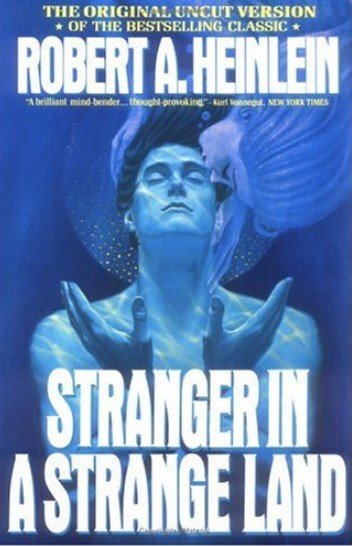
10. The Color Purple
Whoever feels desperate in their lives, I can say for sure that your life will drastically change once you read this book. Celie is an African-American girl who comes across a lot of hardships that a girl is supposed to face.
Starting with an abusive father who spoiled her childhood, she faces a series of other issues like racism, teenage pregnancy, and abusive marriage. Yet, as a woman, she thrives hard to live and succeeds in life. I’m sure this is one of the best story books to read in English.
- Author: Alice Walker
- Story: Celie, an abused African-American woman in early 20th-century Georgia, narrates her life through letters to God. Explores trauma, triumph, and female empowerment.
- Genre: Epistolary novel
- Moral: Resisting oppression and finding strength.
- Why Read It?: Praised for its depth of characters and eloquent use of Black English Vernacular, it’s a powerful cultural touchstone.
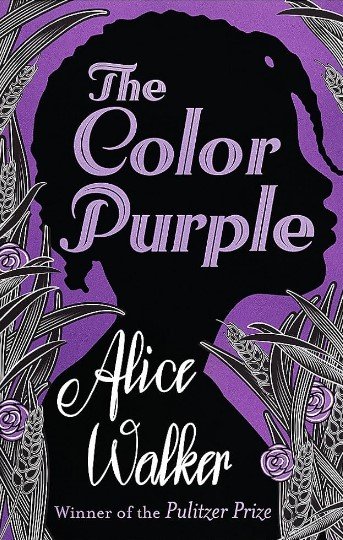
Top 10 Free Novels To Read
“Pride and Prejudice” by Jane Austen: A witty and romantic novel set in early 19th-century England, revolving around the spirited Elizabeth Bennet and the enigmatic Mr. Darcy, exploring themes of love, marriage, and social hierarchy.
Highlights About the Novel:
- Timeless Romance: The relationship between Elizabeth Bennet and Mr. Darcy is a quintessential tale of love overcoming pride and prejudice.
- Social Commentary: Austen’s critique of 19th-century social norms and class distinctions remains relevant and thought-provoking.
- Memorable Characters: From the sharp-witted Elizabeth Bennet to the complex Mr. Darcy, Austen creates characters that resonate with readers.
- Engaging Plot: The novel’s balance of wit, humor, and drama captivates readers from the opening lines to its satisfying conclusion.
- Impact on Literature: “Pride and Prejudice” has inspired numerous adaptations, cementing its place as a beloved classic of English literature.
“Jane Eyre” by Charlotte Brontë: A Gothic tale depicting the life of the orphaned Jane Eyre, who overcomes adversity to become a governess and finds herself entangled in a complex relationship with the brooding Mr. Rochester, revealing secrets that test their love.
Highlights About the Novel:
- Feminist Heroine: Jane Eyre’s independence and strength in the face of adversity make her a pioneering feminist character.
- Gothic Atmosphere: Bronte’s skillful use of Gothic elements adds suspense and mystery to the novel’s narrative.
- Romantic Tension: The evolving relationship between Jane Eyre and Mr. Rochester is both passionate and fraught with secrets.
- Emotional Depth: The novel explores themes of identity, morality, and the search for belonging with profound emotional resonance.
- Literary Legacy: “Jane Eyre” continues to influence literature and popular culture, inspiring adaptations and reinterpretations.
“Moby-Dick” by Herman Melville: A monumental work detailing Captain Ahab’s obsessive pursuit of the elusive white whale, Moby-Dick, blending adventure with philosophical themes of fate, vengeance, and humanity’s place in the natural world.
Highlights About the Novel:
- Epic Adventure: Captain Ahab’s obsessive pursuit of the elusive white whale, Moby-Dick, drives the novel’s gripping narrative.
- Symbolism and Allegory: Melville employs rich symbolism and allegory to explore themes of fate, obsession, and the human condition.
- Philosophical Depth: The novel’s meditations on life, death, and the nature of existence elevate it beyond a simple adventure story.
- Sea Adventure: Detailed descriptions of whaling practices and life aboard the Pequod immerse readers in the 19th-century maritime world.
- Literary Merit: “Moby-Dick” is celebrated for its innovative narrative style and profound exploration of existential themes.
“Frankenstein” by Mary Shelley: The groundbreaking tale of Victor Frankenstein, a scientist who creates a monstrous creature in an unorthodox experiment, exploring themes of ambition, creation, and the consequences of unchecked scientific pursuit.
Highlights About the Novel:
- Promethean Myth: Victor Frankenstein’s creation of the monster challenges notions of scientific progress and moral responsibility.
- Gothic Horror: Shelley’s novel pioneered the genre of science fiction and Gothic horror, influencing subsequent literary works.
- Ethical Dilemmas: The novel raises profound questions about the ethics of creation and the consequences of unchecked ambition.
- Creature’s Humanity: The monster’s quest for acceptance and understanding underscores themes of alienation and compassion.
- Literary Legacy: “Frankenstein” remains a seminal work that continues to provoke discussion about the limits of human knowledge and empathy.
“The Picture of Dorian Gray” by Oscar Wilde: A provocative novel about Dorian Gray, a young man whose portrait ages while he remains perpetually youthful, delving into themes of vanity, hedonism, and the corruption of the soul.
Highlights About the Novel:
- Art and Aesthetics: Dorian Gray’s portrait serves as a powerful symbol of the consequences of vanity and hedonism.
- Morality and Corruption: Wilde’s exploration of the corrupting influence of beauty and pleasure challenges Victorian moral norms.
- Wit and Satire: The novel’s witty dialogue and satirical observations skewer societal hypocrisy and shallow values.
- Psychological Depth: Dorian’s psychological descent into depravity and self-destruction unfolds with chilling intensity.
- Literary Style: Wilde’s decadent prose and exploration of philosophical themes distinguish “The Picture of Dorian Gray” as a masterpiece of fin-de-siècle literature.
“Dracula” by Bram Stoker: The classic Gothic horror story introducing Count Dracula, a vampire who threatens Victorian England as he seeks new victims, blending terror with themes of sexuality, superstition, and the battle between good and evil.
Highlights About the Novel:
- Introduction of Count Dracula: Bram Stoker’s portrayal of Count Dracula introduces one of literature’s most iconic and enduring villains, embodying the archetype of the vampire.
- Gothic Horror: The novel blends Gothic horror with elements of Victorian society, exploring themes of fear, sexuality, and the clash between rationality and superstition.
- Epistolary Format: Written in an epistolary format through journal entries, letters, and newspaper clippings, enhancing the suspense and realism of the narrative.
- Symbolism of Blood: Blood symbolizes both life and corruption throughout the novel, representing Dracula’s predatory nature and the characters’ struggles against evil.
- Cultural Impact: “Dracula” has influenced vampire lore and popular culture, spawning countless adaptations and interpretations across various media.
“The Adventures of Huckleberry Finn” by Mark Twain: A picaresque novel following Huck Finn, a young boy who escapes his abusive father and embarks on a journey down the Mississippi River with Jim, a runaway slave, confronting issues of racism and freedom.
Highlights About the Novel:
- Narrative of Freedom: Huck Finn’s journey down the Mississippi River with Jim, a runaway slave, challenges societal norms and explores themes of freedom and racial injustice.
- Satirical Commentary: Mark Twain uses satire to critique racism, hypocrisy, and the moral dilemmas faced by individuals in the antebellum South.
- Friendship and Morality: Huck’s evolving friendship with Jim forces him to confront his own beliefs about race and morality, leading to his moral development.
- Regional Dialect: Twain’s use of Southern vernacular and dialect adds authenticity and humor to the narrative, capturing the spirit of the American South.
- Controversial Themes: The novel continues to provoke discussions on censorship, racial stereotypes, and the portrayal of race relations in American literature.
“Alice’s Adventures in Wonderland” by Lewis Carroll: A whimsical and surreal tale of Alice, who falls down a rabbit hole into a fantastical world where logic is abandoned, encountering eccentric characters like the Mad Hatter and the Cheshire Cat.
Highlights About the Novel:
- Surreal Fantasy World: Lewis Carroll’s whimsical narrative takes readers on a journey through a nonsensical and dreamlike Wonderland, defying logic and reality.
- Absurd Characters: Alice encounters eccentric characters like the Mad Hatter, the Queen of Hearts, and the Cheshire Cat, each embodying unique quirks and paradoxes.
- Themes of Identity and Imagination: The novel explores themes of identity, transformation, and the power of imagination as Alice navigates a world that challenges her perceptions.
- Language and Wordplay: Carroll’s wordplay and imaginative language contribute to the novel’s enduring charm and appeal to both children and adults.
- Cultural Legacy: “Alice’s Adventures in Wonderland” has inspired numerous adaptations, art, and cultural references, becoming a timeless classic of children’s literature.
“1984” by George Orwell: A dystopian novel set in a totalitarian society ruled by Big Brother, where protagonist Winston Smith rebels against oppression and surveillance, exploring themes of propaganda, thought control, and individual freedom.
Highlights About the Novel:
- Totalitarian Society: Orwell’s depiction of a dystopian future ruled by Big Brother explores themes of totalitarianism, propaganda, and the erosion of individual freedoms.
- Surveillance and Control: The novel introduces concepts like Newspeak and the Thought Police, illustrating the pervasive control of information and thought.
- Symbolism of Big Brother: Big Brother symbolizes oppressive authority and the manipulation of truth, reflecting Orwell’s concerns about political power and surveillance.
- Warning Against Authoritarianism: “1984” serves as a powerful warning against the dangers of totalitarian regimes and the suppression of dissenting voices.
- Literary Influence: The novel has influenced political discourse and popular culture, with terms like “Orwellian” used to describe surveillance and authoritarian practices.
“The Call of the Wild” by Jack London: An adventure novel narrating Buck’s transformation from a domesticated dog into a primal force in the harsh Yukon wilderness during the Gold Rush, exploring themes of survival, instinct, and the wild spirit.
Highlights About the Novel:
- Adventure and Survival: Jack London’s novel follows Buck, a domesticated dog who undergoes a transformative journey into the wilds of the Yukon during the Gold Rush.
- Primal Instincts: Buck’s adaptation to the wilderness explores themes of instinct, survival of the fittest, and the return to primal, ancestral roots.
- Human-Animal Bond: The novel examines the bond between humans and animals through Buck’s relationships with various masters and companions.
- Naturalism: London’s portrayal of the harsh Yukon landscape and its effect on characters reflects the naturalist literary movement, emphasizing environmental determinism.
- Universal Themes: “The Call of the Wild” resonates with readers for its exploration of freedom, self-discovery, and the untamed spirit of the wild.
FAQ
1. How do the characters’ experiences in each book reflect broader social and cultural themes?
Characters’ experiences highlight social and cultural themes like identity, oppression, and resilience.
2. Are there any recurring motifs or symbols that contribute to the deeper meaning of each story?
Motifs and symbols deepen the thematic exploration of each story.
3. What literary techniques or narrative structures do the authors employ to engage readers and convey their messages effectively?
Authors use varied techniques for engaging storytelling and conveying messages efficiently.

